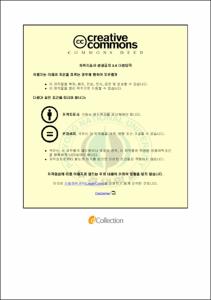사각탱크를 구성하는 탄성판의 진동특성
- Alternative Title
- Vibration Characteristics of a Elastic Rectangular Tank
- Abstract
- Rectangular tanks in contact with fluid are used in various fields of civil, mechanical and marine engineering. Especially in the marine engineering, resonance from exciting force of an engine and propeller causes fatigue damages of tanks. Vibration characteristics of these tanks in contact with fluid are significantly affected by added mass of fluid. Therefore, it is very important to estimate the added mass effect to predict vibration of the tank structures. However, it is difficult to estimate exactly the effect of added mass because of a fluid-structure interaction problem, free surface, vibration modes of structural panels and the depth of water.
Rectangular and cylindrical tanks in contact with fluid have been studied by Chiba(2000) and etc(2000). Bae(2003) analyzed the plates using FEM(finite element method) and fluid region using BEM(boundary element method). Lakis(2008) experimented two cases. One case is the horizontal plate and another is the perpendicular plate. Bae(2010) analyzed a various of tanks which are the same length and height. He changed breadth, thickness, water level, and boundary conditions.
The goal of this paper is to compare one tank with 2-bay tank to find out different characteristics of the tanks. Each vibration mode of panels is calculated to consider structural coupling effects between side plates of a deep 2-bay tank and added mass changing the breadth, thickness, and boundary condition of the tank. A numerical tool using finite elements in plates and boundary elements in fluid region is used to analyse the three dimensional tank structure in contact with fluid.
- Issued Date
- 2011
- Awarded Date
- 2011. 8
- Type
- Dissertation
- Publisher
- 부경대학교
- Alternative Author(s)
- Seo Won-Young
- Affiliation
- 부경대학교 조선해양시스템공학과
- Department
- 대학원 조선해양시스템공학과
- Advisor
- 배성용
- Table Of Contents
- Abstract
1. 서 론 1
2. 이론적 고찰 3
2.1 탱크의 역학모델 3
2.1.1 탱크 구조부의 모델화 4
2.2 유한요소법에 의한 구조부의 정식화 5
2.2.1 가상일의 원리 5
2.2.2 좌표계의 정의와 좌표변환 행렬 6
2.2.3 변형률과 변위의 관계 7
2.2.4 요소내의 임의의 점의 변위와 질점변위와의 관계 8
2.2.4.1 면내변위와 절점변위의 관계 8
2.2.4.2 면외변위와 절점변위의 관계 9
2.2.5 변형률과 절점변위의 관계 11
2.2.6 응력과 변형률의 관계 11
2.2.7 요소 강성행렬 12
2.2.8 요소질량 행렬 14
2.2.9 구조부의 진동방정식 15
2.3 경계 요소법에 의한 유체부의 정식화 16
2.3.1 라플라스 방정식에 대한 경계 적분 방정식의 도출 16
2.3.2 경계요소에 의한 이산화 18
2.3.3 특이적분의 처리 22
2.3.3.1 서브요소분할법 22
2.3.3.2 균일포텐셜조건 24
2.3.4 각점처리 26
2.4 인터페이스 조건에 의한 부가질량 행렬의 유도 29
2.5 접수진동방정식 32
3. 수치계산 및 고찰 33
3.1 두께의 변화에 의한 진동특성 35
3.1.1 비접수에서의 진동특성 35
3.1.2 접수에서의 진동특성 43
3.1.3 부가질량효과에 의한 진동특성 43
3.2 폭 변화에 의한 진동특성 57
3.2.1 비접수에서의 진동특성 57
3.2.2 접수에서의 진동특성 57
3.2.3 부가질량효과에 의한 진동특성 57
4. 결 론 71
5. 참고문헌 72
- Degree
- Master
- Appears in Collections:
- 대학원 > 조선해양시스템공학과
- Files in This Item:
-
-
Download
 사각탱크를 구성하는 탄성판의 진동특성.pdf
기타 데이터 / 18.84 MB / Adobe PDF
사각탱크를 구성하는 탄성판의 진동특성.pdf
기타 데이터 / 18.84 MB / Adobe PDF
-
Items in Repository are protected by copyright, with all rights reserved, unless otherwise indicated.